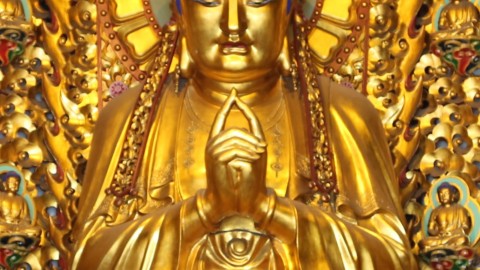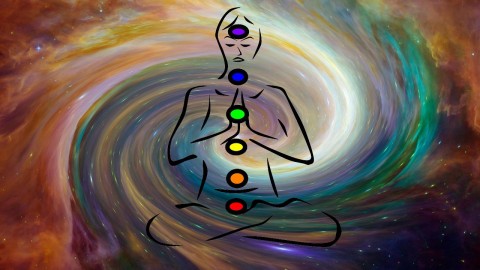WHAT IS THE DIFFERENCE BETWEEN INTROSPECTION AND SELF-REMEMBERING?
There are a lot of differences. Introspection is thinking about yourself. Self-remembering is not thinking at all: it is becoming aware about yourself. The difference is subtle, but very great.
The Western psychology insists on introspection, and the Eastern psychology insists on self-remembering. When you introspect, what do you do? For example, you are angry: you start thinking about anger – how it is caused. You start analyzing why it is caused. You start judging whether it is good or bad. You start rationalizing that you had been angry because the situation was such. You brood about anger, you analyze anger, but the focus of attention is on the anger, not on the self. Your whole consciousness is focused on the anger – you are watching, analyzing, associating, thinking about it, trying to figure out how to avoid it, how to get rid of it, how not to do it again. This is a thinking process. You will judge it “bad” because it is destructive. You will take a vow that “I will never commit the same mistake again.” You will try to control this anger through will. That’s why the Western psychology has become analytical… analysis, dissection.
The Eastern emphasis is not on anger. The Eastern emphasis is on the self. To be aware when you are angry, to be so aware…. Not to think, because thinking is a sleeping thing. You can think while you are fast asleep; there is no need for awareness. In fact you continuously think without being at all aware. The thinking goes on and on and on. Even when you are fast asleep in the night, the thinking continues, the mind goes on continuing its inner chatter. It is a mechanical thing.
The Eastern psychology says, “Be aware. Don’t try to analyze anger, there is no need. Just look at it, but look with awareness. Don’t start thinking.” In fact if you start thinking then thinking will become a barrier to looking at anger. Then thinking will grab it. Then thinking will be like a cloud surrounding it; the clarity will be lost. Don’t think at all. Be in a state of no-thought, and look.
When there is not even a ripple of thinking between you and the anger, the anger is faced, encountered. You don’t dissect it. You don’t bother to go to its source, because the source is in the past. You don’t judge it, because the moment you judge, thinking starts. You don’t take any vow that “I will not do it,” because that vow leads you into the future. In awareness you remain with the feeling of anger – exactly here-now. You are not interested in changing it, you are not interested in thinking about it: you are interested to look at it directly, face to face, immediately. Then it is self-remembering.
And this is the beauty of it: that if you can look at anger it disappears. It not only disappears at this moment: the very disappearance of it by your deep look gives you the key that there is no need to use will, there is no need to make any decision for the future, and there is no need to go to the original source from where it comes. It is unnecessary. You have the key now: look at anger, and anger disappears. And this look is available forever. Whenever anger will be there you can look; then this look grows deeper.
There are three stages of the look. First, when the anger has already happened and gone. Almost, you look at the tail disappearing – the elephant has gone, only the tail is there – because when the anger was there, really, you were so deeply involved in it you could not be aware. When the anger has almost disappeared, ninety-nine per cent – only one per cent, the last part of it is going, disappearing into the farther horizon – then you become aware: this is the first state of awareness. Good, but not enough.
The second state is when the elephant is there, not the tail: when the situation is ripe, you are really angry to the peak – boiling, burning – then you become aware.
Then there is still a third stage: the anger has not come, is still coming – not the tail but the head. It is just entering your area of consciousness and you become aware – then the elephant never materializes. You killed the animal before it was born. That is birth control. The phenomenon has not happened; then it leaves no trace.
If you stop it in the middle, half the head has happened, it will leave something on you – a trace, a load, a small wound. You will feel scratched. Even if you don’t allow it now to have its full sway, it has entered. If you look at the tail, the whole thing has already happened. You can at the most repent; and repentance is a thinking. Again you become a victim of the thinking mind.
A man of awareness never repents. There is no point in repenting because the more awareness goes deep, he can stop a process even before it has begun. Then what is the point of repenting? And not that he tries to stop it – that’s the beauty of it. He simply looks at it. When you look at a mood, at a situation, at an emotion, feeling, thought – when you bring the quality of look – the look is like light: darkness disappears.
There is a vast difference between introspection and self-remembering. I am not in favor of introspection. In fact, introspection is a little pathological: it is playing with your own wound. It won’t help. It won’t help the wound to heal. In fact it will do just the reverse: if you go on fingering your wound you will keep it fresh.
Introspection is not good. Introspective people are always morbid, ill. They think too much. Introspective people are closed. They just go on playing with their wounds and their anguish and their anxiety – and the whole life seems then too much of a problem; it cannot be solved. Everything looks like a problem for an introspective man. Whatsoever happens becomes a problem.
And, then, he is inside too much; he cannot move out. The balance is lost.
Introspective people escape from life and go to the Himalayas. They are morbid, ill, pathological. A healthy person has a healthy swing: he can move in, he can move out. For him there is no problem for in and out. In fact he doesn’t divide the inner life and the outer life. He has a free flow, a free swing. Whenever it is needed he simply moves in. Whenever it is needed he simply moves out. He is not against the outside world; he is not for the inside world. In and out should be just like in-breathing and out-breathing: both are needed.
Introspectives become too brooding, too inside. They become afraid to go out because whenever they go out, there are problems, so they close up. They become monads with no windows. And then problems and problems – the mind goes on creating problems and they go on trying to solve.
An introspective person is more prone to become mad. Introverts become mad more than extroverts. If you go to the madhouses you will find ninety-nine per cent of the people there are introverts, introspective, and only one per cent, at the most, extroverts. They don’t bother about the inner side of things. They go on living on the surface. They don’t think that there are problems. They think there is only life to be enjoyed. Eat, drink, be merry is their whole religion, nothing else.
You will always find extroverts more healthy than introverts because at least they are in contact with the whole. The introvert loses all contact with the whole.
He lives in his dreams. He has no outgoing breath. Just think: if you don’t allow the breath to go out, you will become ill because the breath that has gone in will not remain fresh always. Within seconds it will become stale, within seconds it will lose the oxygen, the life, within seconds it is finished – and then you are living in stale air, dead. You have to go out to seek new sources of life, to seek fresh air. You have to be continuously moving.
To me, if you want to choose between the extrovert and introvert, I will say to you, “Choose the extrovert.” He is less ill – lives on the surface, can never come to know the truth, but at least never goes mad. The introvert can come to know the truth, but that is one possibility out of a hundred. Ninety-nine per cent is the possibility he will go mad.
I am in favor of a flowing life. Life should be a rhythm: you go out, you go in, and don’t cling to anything. Just remain alert. Remember. Go on remembering: when you are in the world, then too remember; and when you are inside yourself, then too remember. Always keep awareness alert, burning, alive. The flame of awareness should not be lost, that’s all. Then live in the market or live in the monastery – you will never be a loser in life. You will attain to the profoundest depth that life can give. That profoundest depth is God. God is a swinger: out and in, introvert and extrovert both – but aware.
WHAT IS THE DIFFERENCE BETWEEN SELF-REMEMBERING AND WITNESSING?
Just now I told you the difference between introspection and self-remembering.
Now, the difference between self-remembering and witnessing.
Yes, there is a lot of difference again: because in self-remembering the emphasis is on the self. Just as in introspection the emphasis is on the thought, the feeling, the emotion, the mood, anger, sexuality, or anything, and the self is forgotten; in self-remembering the self is remembered and the whole energy is centered on the self, and you just look at the mood, at the situation, at the feeling – you don’t think about it, because in the thinking the look is lost, the purity of the look is lost.
Witnessing is a step further ahead. In witnessing, even the self is dropped; only remembering remains. Not that I remember. The “I” is no longer part of witnessing. Just remembering…. Witnessing is a witnessing of the self. Self- remembering is the beginning; witnessing is the end. By self-remembering you start looking at anger, keeping yourself centered at the self, crystallized at the self, looking at the ripples around you in the mind. But when you look at the mind, by and by, the mind disappears. When the mind disappears and there is void, then a new step can be taken: now, you look at yourself. Now the very energy that was looking at anger, sex, jealousy is free – because the jealousy, anger, and sex have disappeared. Now that same energy turns around to look at yourself.
When the same energy looks at the self, the self also disappears; then there is only remembering. That remembering is witnessing. In witnessing there is no self. You look at the anger, but when you look at yourself, you are no longer you: just a vast, infinite, unbound witnessing. Just consciousness – infinite and vast, but with no crystallization. This has to be understood.
Gurdjieff worked his whole life on the method of self-remembering because in the West to introduce witnessing would have been almost impossible, because the West has been living with introspection. All the Christian monasteries, they have been teaching introspection. Gurdjieff introduced something beyond introspection: he called it “self-remembering.” He was always thinking of introducing witnessing, but he could not because witnessing can be introduced only when self-remembering is settled; before it, it cannot be introduced. To talk about it before the ripeness of self-remembering will not reach anywhere; it will be useless. He waited long, but he couldn’t introduce it.
In the East we have used both. In fact we have used all the three: introspection was for very ordinary religious people, those who don’t want to go deep; those who want to go deep, for them, self-remembering; and those who want to go so deep that they disappear in the depth, for them, witnessing. Witnessing is the last. Beyond that, nothing exists. You cannot be a witness to the witness – because that too will be witnessing. So beyond witnessing there is no possibility to go: you have come to the very end. The end of the world is witnessing.
Move from introspection to self-remembering, and from self-remembering hope some day to move to witnessing. But keep it in mind that self-remembering is not the goal. It is good just as a bridge, but one has to cross, one has to go beyond it.
Tags: Introspection And Self-Remembering Patanjali










